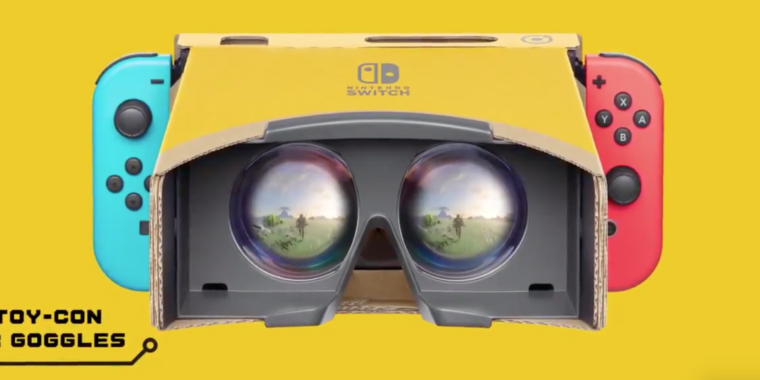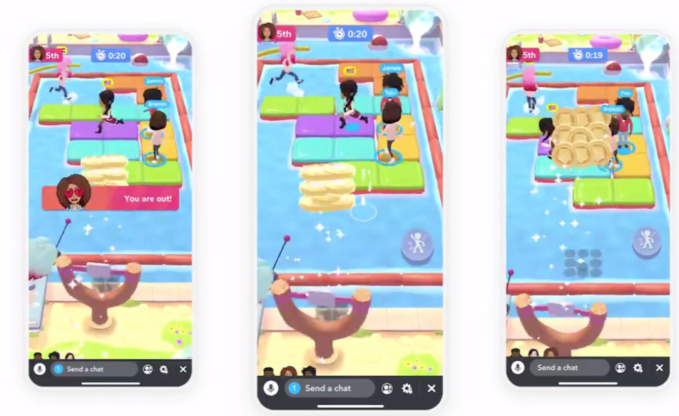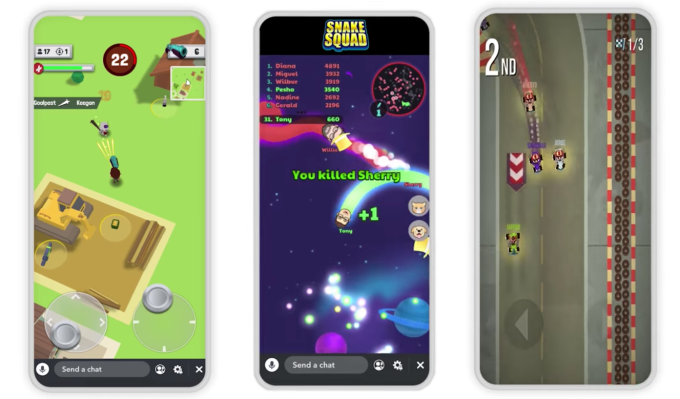
-
Breath of the Wild in VR? I honestly have no idea how that's going to feel, if it's locked at a 30fps refresh.Nintendo
-
This mode converts the entire game into a VR experience.
-
Thus, the game appears to look exactly the same as in non-VR modes (though we'll have to wait for our own eyes-on with the mode to see how much its visuals have been downgraded).
-
This is the only footage of BOTW's VR mode thus far. Meaning, it appears to look identical to the flat-screen version, only with head control for the camera.
-
Tilting a head around to aim a bow could be cool in VR, at least.
-
And here's a VR update for Super Mario Odyssey.
-
Unlike BOTW, Odyssey's VR mode is limited to specially made, "bite-sized" levels.
-
HE'S COMIN' RIGHT T'WARDS US!
-
You know it's VR because Mario is all up in your field of view.
The Nintendo Labo VR Kit, launching later this month, is arguably the Japanese game maker's first virtual reality product in 24 years. Up until today, the product (which starts at $40) was a self-contained collection of new mini-games, all designed around foldable cardboard controllers.
That changed with a Thursday night announcement: two of the biggest games on Nintendo Switch, Super Mario Odyssey and Legend of Zelda: Breath of the Wild, will receive free VR-mode updates on April 25, two weeks after the Labo VR Kit's launch date. Both will require said VR Kit, which includes a pair of lenses that affix to the Switch's screen and turn it into a makeshift VR headset.
Odyssey's free update will open up three newly designed levels, all based on existing flat-screen worlds from the 2017 game. In these, players will look at Mario from a third-person perspective, which they can shift by rotating their head. This resembles existing VR platforming games like Moss, as opposed to a VR adventure viewed from the famous plumber's first-person perspective. It's unclear whether the camera will remain at a fixed, central point in these three levels, or whether it will follow Mario's movement a la the more dynamic Astro Bot: Rescue Mission.
Meanwhile, instead of creating specific VR zones, Breath of the Wild's upcoming update seems to attach a VR option to the full game. Meaning, players will still have full joystick control of where the game's camera hovers around the character Link, along with a head-tracked option to more finely tune what angle you view him from. That head tracking may factor into series-specific actions like aiming a bow and arrow, but it doesn't appear to put players into a first-person VR experience.
How comfortable either mode will be in practice remains to be seen. Anything short of a locked 60 frames-per-second refresh is notorious for causing motion sickness, and we don't know if Odyssey will continue enjoying a 60fps refresh with a "doubled lens" display on the Switch's screen (which would then be translated by the Labo VR Kit's dual lenses). Breath of the Wild, meanwhile, hovers around a 30fps refresh before it factors its own doubled lens rendering for a VR mode.We don't yet have an indication of how either game's visuals will be updated (or even downgraded) to accommodate for VR's rendering burden. And we can only assume that VR players in both of these modes will have to hold a Switch up to their face like a periscope, then clutch the system's Joy-Cons in that position to play the games. Unlike the Virtual Boy, this Nintendo Labo-ized VR rig does not include a stand that can comfortably press a headset to a player's face.
Thursday's news follows a similar Labo patch for a non-Labo game last year, when Mario Kart 8 Deluxe began supporting the Labo Vehicle Kit's motorcycle set as a motion controller. We honestly wish Nintendo's port of Captain Toad: Treasure Tracker had gotten this Labo VR update, as that puzzle game already includes motion controls for adjusting its cameras, which make the game's clue-hunting thrust a lot easier to manage.
Listing image by Nintendo
https://arstechnica.com/gaming/2019/04/nintendo-will-add-free-vr-modes-to-switchs-big-mario-zelda-games-on-april-25/
2019-04-05 07:30:00Z
52780260830854
:no_upscale()/cdn.vox-cdn.com/uploads/chorus_asset/file/16007552/image011.png)








:no_upscale()/cdn.vox-cdn.com/uploads/chorus_asset/file/16008466/Snap_Kit___Fitbit_2.png)